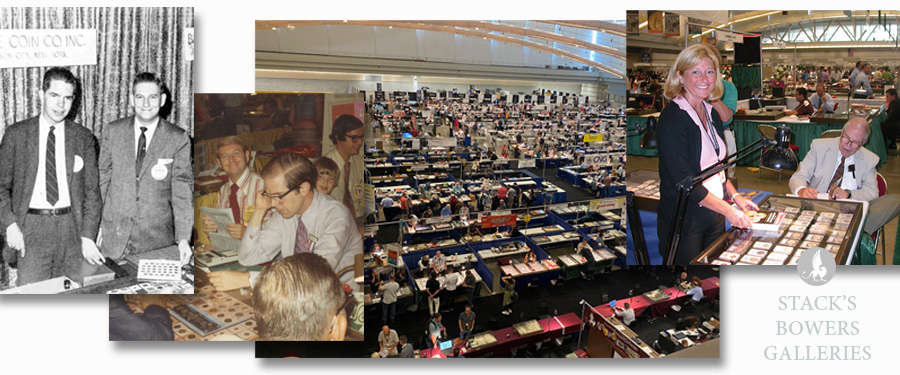
In the first decades of its existence, the American Numismatic Association’s annual convention was not quite the affair it is today. Attendance was sparse, confined to a small group of dedicated collectors. A bourse, today regarded as a standard, even defining feature of a coin show, was absent from the first convention in 1891 and was not included for more than 30 years.
In the late 19th and early 20th centuries, there was some dissension in the ANA’s ranks about the role of dealers in the organization. Many felt that the ANA – and its convention – should be devoted to the science and practice of numismatics and building community among American collectors and that dealing at the convention corrupted this purpose and opened the Association up to accusations of favoritism or crass commercialism. Others pointed out that many collectors wanted access to dealer stock at the shows and were not solely dedicated to the pursuit of numismatic knowledge and aesthetic appreciation of coins.
At the 1911 convention, a debate about the merits of allowing dealers on the ANA Board revealed an uneasiness among the leadership about dealers having sway. At the 1920 convention, Moritz Wormser, then the Chairman of the Board of Governors, shared that he had received criticism characterizing the ANA as a dealers’ organization. He said, “We are here to buy coins, but sales should not be made in the exhibition room, and in that connection I think the practice which we had heretofore of holding auction sales at conventions and advertising them as a part of the program should be discontinued… no particular man’s sales should be advertised, because our organization should be the ANA organization and should not smack of commercialism, so that when anybody accuses the ANA of commercialism we can show him absolutely clean hands.”
Exhibits were apparently being used to advertise dealer stock, a practice with which many members took issue. Rules existed prohibiting this, but violations were common enough that Elmer Sears, a retired dealer, sardonically addressed the convention in 1921 advocating for a clear division between exhibits and coins for sale. A heated debate about whether attendees should be allowed to buy and sell coins followed.
The conceptual distinction between collector and dealer was the subject of articles and debates in this period, with some writers pointing out that most collectors have some commercial – in some instances, near mercenary – instincts and would be more than willing to part with coins from their collections if there was a profit to be made.
Into the 1920s, any form of dealing or commercial activity at the convention remained contentious, “apt to draw cold stares,” to borrow from Q. David Bowers’ 125th anniversary history of the ANA (a valuable resource in writing this blog). Despite this acrimony, 1922 saw the first bourse at an ANA convention. Hosted at the Great Northern Hotel in New York City, a large room was set aside in which dealers could ply their trade, inaugurating bourses as a regular feature of the ANA convention.
Bourses expanded through the 20th century. Per a recent CoinWeek article by David Alexander, “By the later 1940s, ANA had awakened to the bourse as a major source of income for the national organization…” Though many other activities take place at the ANA’ World’s Fair of Money, the bourse is undeniably a central feature of the convention.





